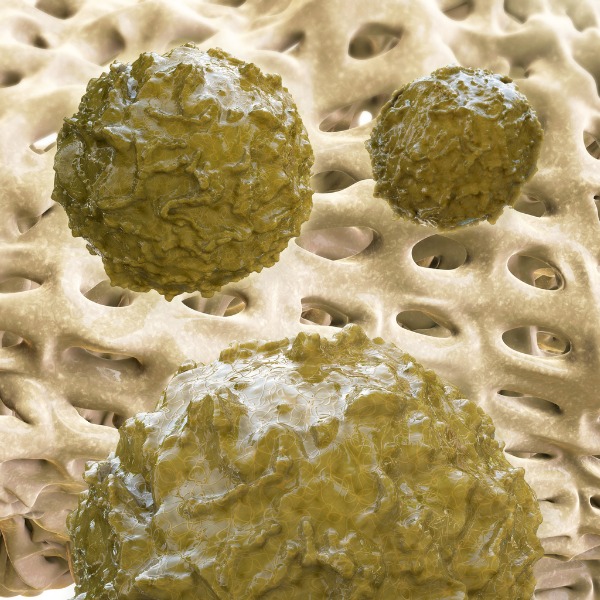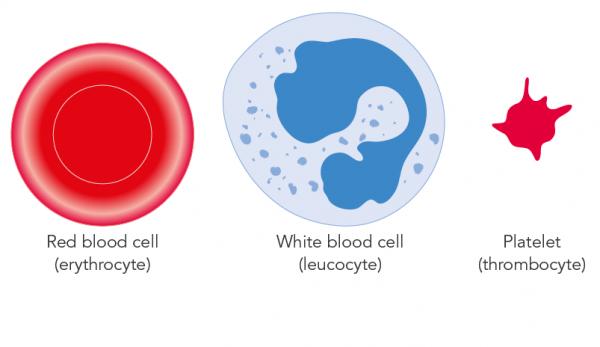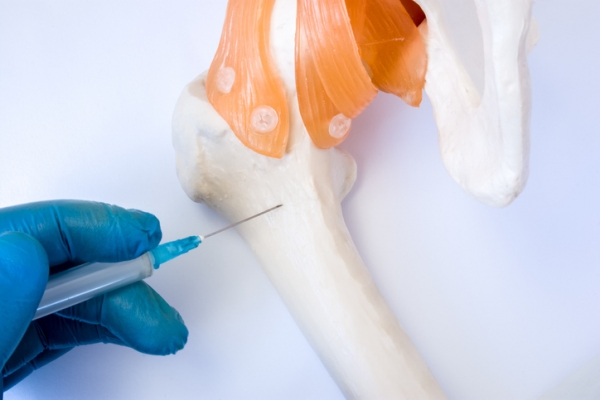My Stem Cell Donation Story

A 3D-rendered illustration of stem cells (xrender, iStockphoto)

A 3D-rendered illustration of stem cells (xrender, iStockphoto)
How does this align with my curriculum?
| Grade | Course | Topic |
|---|
In April 2016, Let’s Talk Science volunteer Daniel Tarade donated stem cells to help a person who needed a stem cell transplant to survive. Learn what stem cells are, how and why people donate, and what Daniel’s experience was like.
In April of 2016, I got a phone call that changed my life. Canadian Blood Services were calling to tell me that I was a match for a person who needed a stem cell donor. Within six months, I had surgery. Doctors took stem cells from my bone marrow. These stem cells were then urgently shipped to a patient desperately fighting for their life.
Wait - let’s take a step back. What are stem cells? What is a “match”? Exactly how do you donate stem cells? Does it hurt?
What is a stem cell?
A stem cell is an unspecialized cell that can become another type of cell. This happens through a process called differentiation.
There are different types of stem cells. You might have heard or read about embryonic stem cells. Embryonic stem cells are pluripotent. This means that they can differentiate into all the cell types found in your body. This superpower-like quality makes them useful for medical research. However, there are ethical debates about this because these cells are harvested from blastula, one of the earliest stages of human life.
Did you know?
Scientists are using stem cells to make patients’ bodies resistant to HIV.
Less controversially, people can donate hematopoietic stem cells. These are blood stem cells found in the bone marrow, the soft, spongy insides of your bones. Blood stem cells are multipotent, which means that they can become a certain number of different cells. Specifically, they can differentiate into red blood cells, white blood cells, and platelets.

Your blood cells do many of the tasks required to keep you alive. For example, red blood cells bring oxygen to your cells and white blood cells fight infections. However, some people have stem cells that do not work properly. Imagine that a hematopoietic stem cell is like a factory. This factory constantly makes red blood cells, white blood cells, and platelets. In some people, these factories have stopped working. Leukemia is an example of a disease that affects blood stem cells. The stem cells of a person with leukemia are affected so they start to produce cells at an uncontrollable rate. In other words, they become cancerous.
Did you know?
Canadian scientists James Till and Ernest McCulloch discovered stem cells in the 1960s.
There are treatment options for patients with faulty stem cells. One of the last and most serious options is a stem cell donation. During a stem cell donation, the patient’s own stem cells are killed with high doses of chemotherapy and radiation and replaced with stem cells from another person. This person is called the match.
What is a match?
A match is a person who has stem cells that are like those of the person with the disease. More specifically, they have similar enough human leukocyte antigens (HLA). Antigens are things that can provoke an attack by the body’s immune system.
A white blood cell can tell what cells it needs to attack based on their HLA markers. You can think of an HLA marker like a sports jersey. If a cell has the same HLA markers as the rest of the body, they are on the same team. If a cell has different HLA markers, it is likely an invader.
This system of identification helps a white blood cell to protect the body from viruses and bacteria. However, it can make transplantation difficult. If donated blood cells have HLA markers that are too different, white blood cells will attack them.
A doctor’s first choice would be to look for a match within the person’s family. However, only 30% of patients find a match amongst their relatives, usually a brother or sister. The remaining 70% of patients rely on unrelated donors, where the probability of a match can vary.
What is it like to donate stem cells?
I signed up to donate stem cells when I was 17, which is how old you must be to register. When you register for the stem cell registry through Canadian Blood Services, you fill out a health questionnaire and swab the inside of your cheek. The health questionnaire helps the registry staff see if you are healthy enough to one day donate stem cells. The cheek swab is used to get your DNA for HLA marker testing.
Most people who register never match with a person in need. However, I got the call when I was 23 years old saying I was a match.
After I got that call, the first thing I had to do was have a blood test to confirm I was a match. If there are multiple matches, this test also helps to decide who is the best match. Next, I had a checkup to make sure that my heart was healthy, and that I had no infections. If you are not in good general health, you are not allowed to donate.
After these tests, I was cleared for donation!
So, what does donating stem cells involve?
There are two main methods of donating stem cells. The classic method involves surgery. The quickest way to get these stem cells is to use a big needle and suck up the stem cells from inside your pelvic bone.

However, in most cases, people donate via a relatively new process called apheresis. This process involves taking blood from your body via a needle, separating the blood into different components, and only keeping the stem cells.
Did you know
When a child is born, the leftover blood in the umbilical cord and placenta is extra-valuable for donation. This is because it is full of stem cells and easy to match with others.
I donated stem cells surgically. I went to the hospital early in the morning and was put under general anesthetic. While I was unconscious, the doctors removed bone marrow from my hip bone. I was sound asleep and didn’t feel a thing. Afterwards, I had some side effects, including a sore throat and nausea. Also, my lower back was stiff because that is where they put the needle. Other than the back pain, most of these side effects only lasted a few hours. The back stiffness lasted about three or four days. I was back to school in four days and running within three weeks!
How common are stem cell donations?
As of 2017, there were 400 000 Canadians registered for stem cell donation. There were also more than 25 million donors worldwide, connected to a global register. At any given moment in Canada, there are almost 1 000 people looking for a match. 80% of them end up using stem cells from other countries. Worldwide, in 2015, there were 50 000 people looking for matches outside of their family.
Stem cell registries suffer from a lack of ethnic diversity.There is a particularly big need for donors with mixed backgrounds. One study of the American population found that Caucasian people have a 75% chance of finding a match outside of their family. However, people with mixed or non-Caucasian genetic backgrounds have a much lower chance (1). This is because in general, people tend to match better with others of a similar ethnic background. But there is a shortage of non-Caucasian donors worldwide.
Want to help?
There are over 80 disorders and diseases that can be treated by a stem cell donation. But even if you don’t want to or can’t donate stem cells, there are other ways you can help others in need! You can donate blood, sign up as a organ donor, volunteer for a stem cell club, or consider working for a stem cell registry.
Starting Points
- Have you heard of donating stem cells before? In what context?
- Would you consider donating your stem cells, even if surgery was required, to save someone’s life? Why/why not?
- Have you known anyone who has received a stem cell donation? Why did the person need a stem cell donation?
- Since the process of donating stem cells has become less invasive, do you think it will become more common among the general population?
- Do you think the public knows much about stem cells and the process of stem cell donation? Do you think Canada’s blood service is doing enough to inform the public about stem cell donation?
- Doing a cheek swab is very easy. Should stem cell screening become mandatory so that more stem cell matches could be found easier and faster? Why/why not?
- What barriers exist to developing a larger bank of stem cell donors?
- What is a stem cell? Where are they located in the body?
- What are human leukocyte antigen (HLA) markers? Why is it so important to get stem cell donations from people of all ethnic groups?
- Investigate the use of stem cell donation in treating a specific disease or medical condition.
- You may be aware of stem cells and their potential to help treat different diseases. What diseases and health conditions are stem cells currently used to help treat? Why does it take so long to get new treatments using stem cells to actual patients? (Note: This question will require some additional research.)
- What television commercials or radio advertisements have you heard about stem cell donation? What organization(s) are producing these advertisements?
- Teachers could use this article and the supporting resources to introduce and/or support an understanding of different types of cells, stem cells, blood and the circulatory system, and innovations in biotechnology. In addition, the article introduces the concept of human leukocyte antigens (HLAs) and the role of the immune system in determining stem cell transplantation success or failure.
- Before reading the article student could complete a Vocabulary Preview to help introduce and reinforce new terminology about stem cells. Ready-to-use Vocabulary Preview reproducibles can be found in [Google doc] and [PDF] formats.
- After students have read through the article and viewed the embedded video(s) they could complete a Concept Definition Map about stem cells. Ready-to-use Concept Definition Map reproducibles can be found in [Google doc] and [PDF] formats.
Connecting and Relating
- Have you heard of donating stem cells before? In what context?
- Would you consider donating your stem cells, even if surgery was required, to save someone’s life? Why/why not?
- Have you known anyone who has received a stem cell donation? Why did the person need a stem cell donation?
Relating Science and Technology to Society and the Environment
- Since the process of donating stem cells has become less invasive, do you think it will become more common among the general population?
- Do you think the public knows much about stem cells and the process of stem cell donation? Do you think Canada’s blood service is doing enough to inform the public about stem cell donation?
- Doing a cheek swab is very easy. Should stem cell screening become mandatory so that more stem cell matches could be found easier and faster? Why/why not?
- What barriers exist to developing a larger bank of stem cell donors?
Exploring Concepts
- What is a stem cell? Where are they located in the body?
- What are human leukocyte antigen (HLA) markers? Why is it so important to get stem cell donations from people of all ethnic groups?
- Investigate the use of stem cell donation in treating a specific disease or medical condition.
Nature of Science/Nature of Technology
- You may be aware of stem cells and their potential to help treat different diseases. What diseases and health conditions are stem cells currently used to help treat? Why does it take so long to get new treatments using stem cells to actual patients? (Note: This question will require some additional research.)
Media Literacy
- What television commercials or radio advertisements have you heard about stem cell donation? What organization(s) are producing these advertisements?
Teaching Suggestions
- Teachers could use this article and the supporting resources to introduce and/or support an understanding of different types of cells, stem cells, blood and the circulatory system, and innovations in biotechnology. In addition, the article introduces the concept of human leukocyte antigens (HLAs) and the role of the immune system in determining stem cell transplantation success or failure.
- Before reading the article student could complete a Vocabulary Preview to help introduce and reinforce new terminology about stem cells. Ready-to-use Vocabulary Preview reproducibles can be found in [Google doc] and [PDF] formats.
- After students have read through the article and viewed the embedded video(s) they could complete a Concept Definition Map about stem cells. Ready-to-use Concept Definition Map reproducibles can be found in [Google doc] and [PDF] formats.
Learn more
A first-hand account of blood stem cell donation (2018)
This article from Harvard Science's In The News blog contains detailed information about what happens but also the science behind it each step of the way.
Information from Canadian Blood Services on how it works and also on common myths and some basic facts
International marrow registries together reach 25 million donor milestone (2015)
Statistics from Canadian Blood Services on how many people in Canada and around the world are helped by stem cell donation
More about Canadian stem cell researchers McCulloch and Till
They received an award and this link provides more on them and how they made their discoveries (click on “more” below the first item on the page)
References
Gragert, L., Eapen, M., Williams, E., Freeman, J., Spellman, S., & Baitty, R. et al. (2014). HLA match likelihoods for hematopoietic stem-cell grafts in the U.S. Registry. New England Journal Of Medicine, 371(4), 339-348. DOI: 10.1056/nejmsa1311707